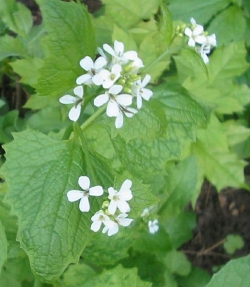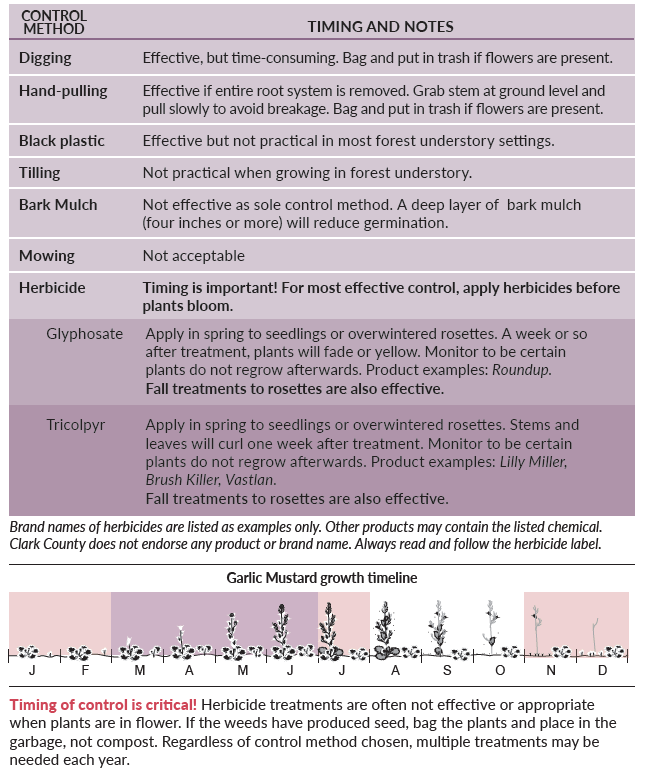
Allaria petiolata
Why is garlic mustard a problem?
Garlic mustard is a very aggressive, rapidly spreading weed with a dense growth pattern. It displaces native plants and has a long seed viability which makes the species difficult to eradicate. Garlic mustard also produces phytotoxins that inhibit the growth of other plants and fungi around it, harming native species regeneration and survival.
Garlic mustard is thought to have been introduced unintentionally through debris piles and/or carried by people and pets. It is avoided by deer, giving it a competitive advantage over native plants.
Recommendations for controlling garlic mustard
Recognizing garlic mustard
Garlic Mustard is a tap-rooted biennial or sometimes winter annual that grows 2-3 feet tall. It usually produces one flowering stalk per plant with small, four-petal white flowers clustered at the top of the stem, blooming in April and May.
Seedlings emerge in the spring and form basal rosettes by midsummer. In the spring of the second year the rosette produces a flowering stalk. Basal leaves are kidney-shaped with scalloped edges. Stem leaves are triangular with longer teeth on leaf edges, with the leaves becoming smaller toward the top of the plant.
Garlic mustard is usually found in shaded woodlands and along stream corridors, though it can grow in sunny sites as well.
The plant reproduces by seed and can self-pollinate or cross pollinate. Seeds are viable in the soil for at least 10 years.
